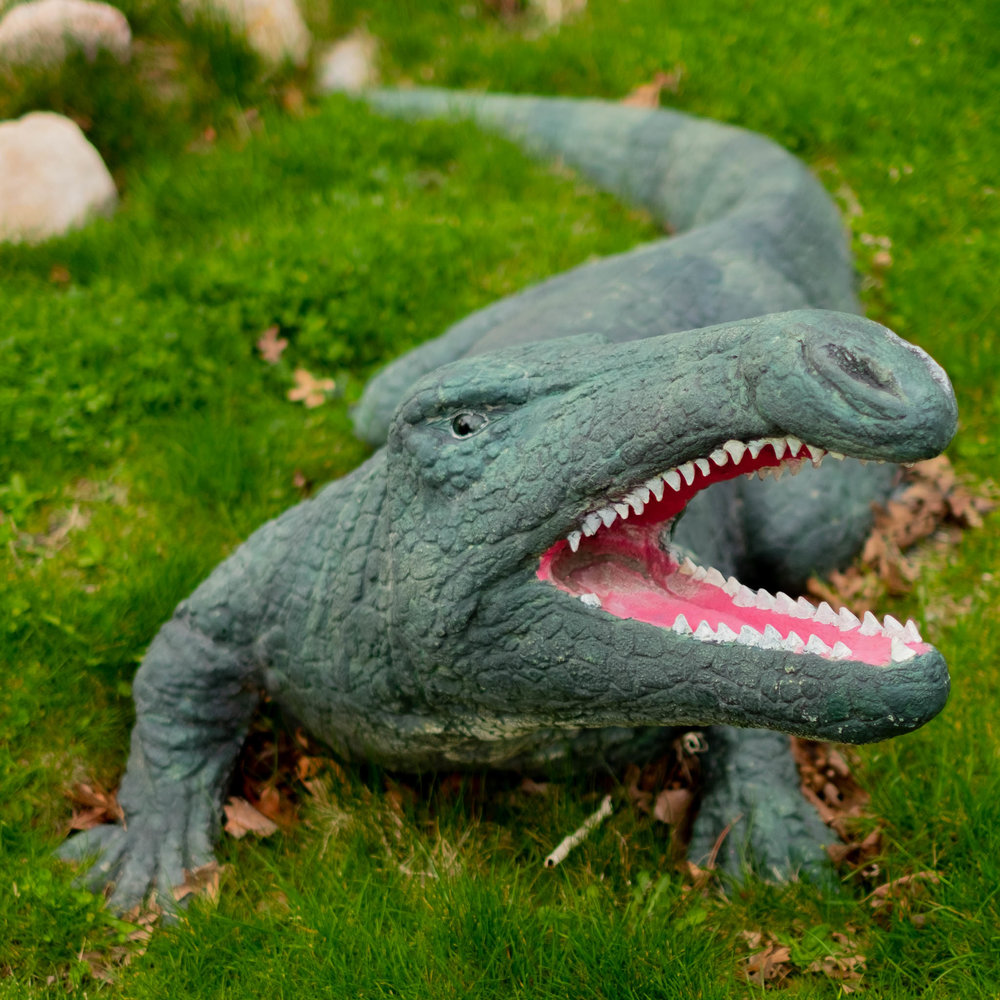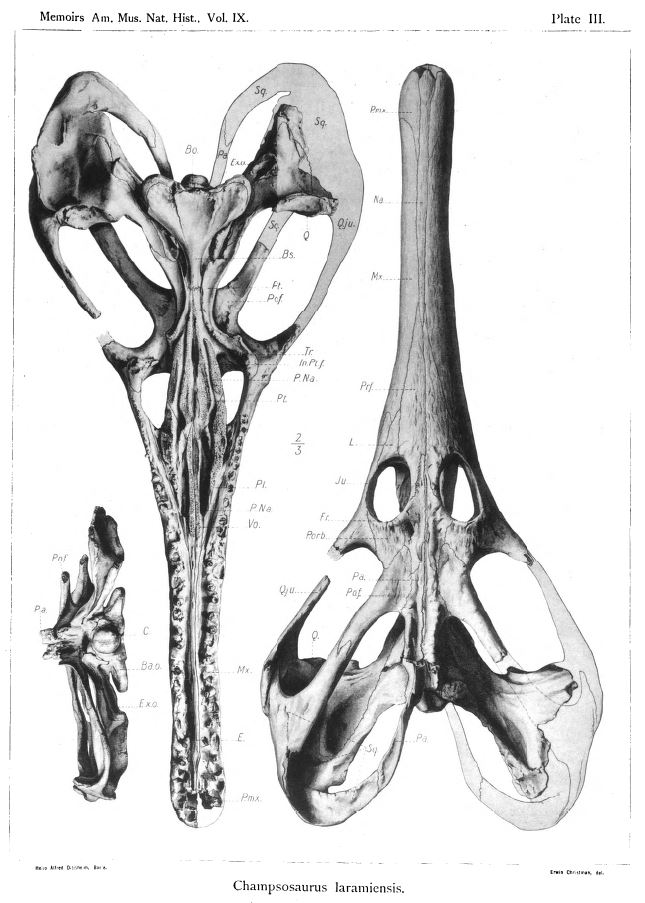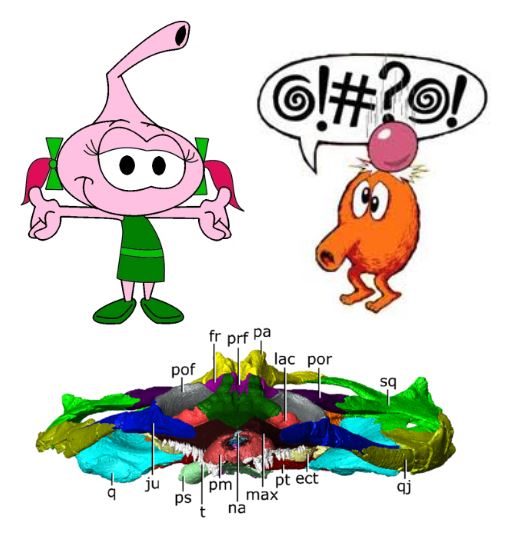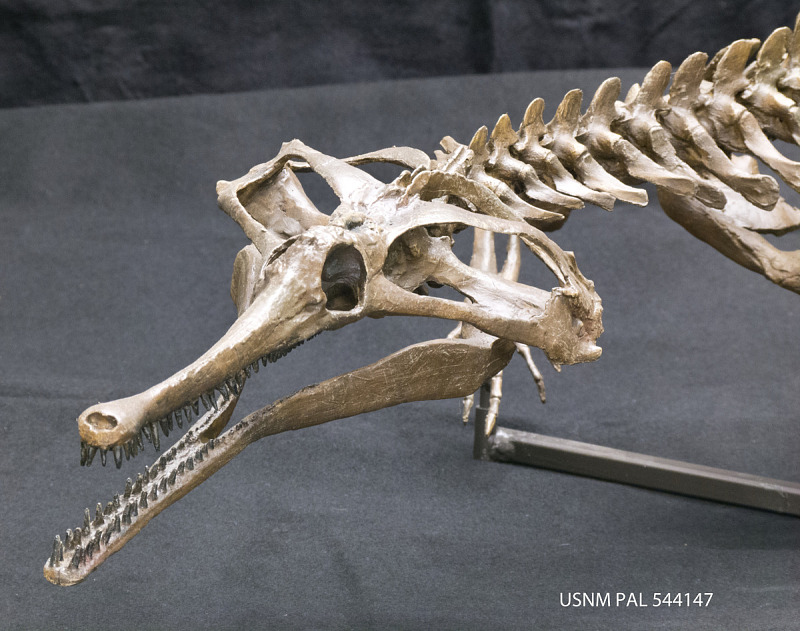
Species: albertensis, ambulator, gigas, laramiensis, lindoei, natator, tenuis
Range: Late Cretaceous to Eocene (Turonian-Thanetian, 94-56 MYA) from western North America, including Texas, Utah, Wyoming, Montana, Alberta, Saskatchewan, and Nunavut.
Size estimate: 5-12 ft length, 50-80 lbs
Discovery: Edward Drinker Cope, 1876
Classification: Sauropsida, Eureptilia, Archosauromorpha, choristodera, champsosauridae
Since no one has ever seen a living dinosaur, and the missing pieces of the fossil record withhold important clues to their appearance, no artistic representation of a dinosaur ever gets it 100% right. On top of that, new discoveries can change our ideas of extinct creatures drastically. So, how close does this sculpture come to what we know of the original animal?



© 2023 Dinosaur Park • All Rights Reserved.